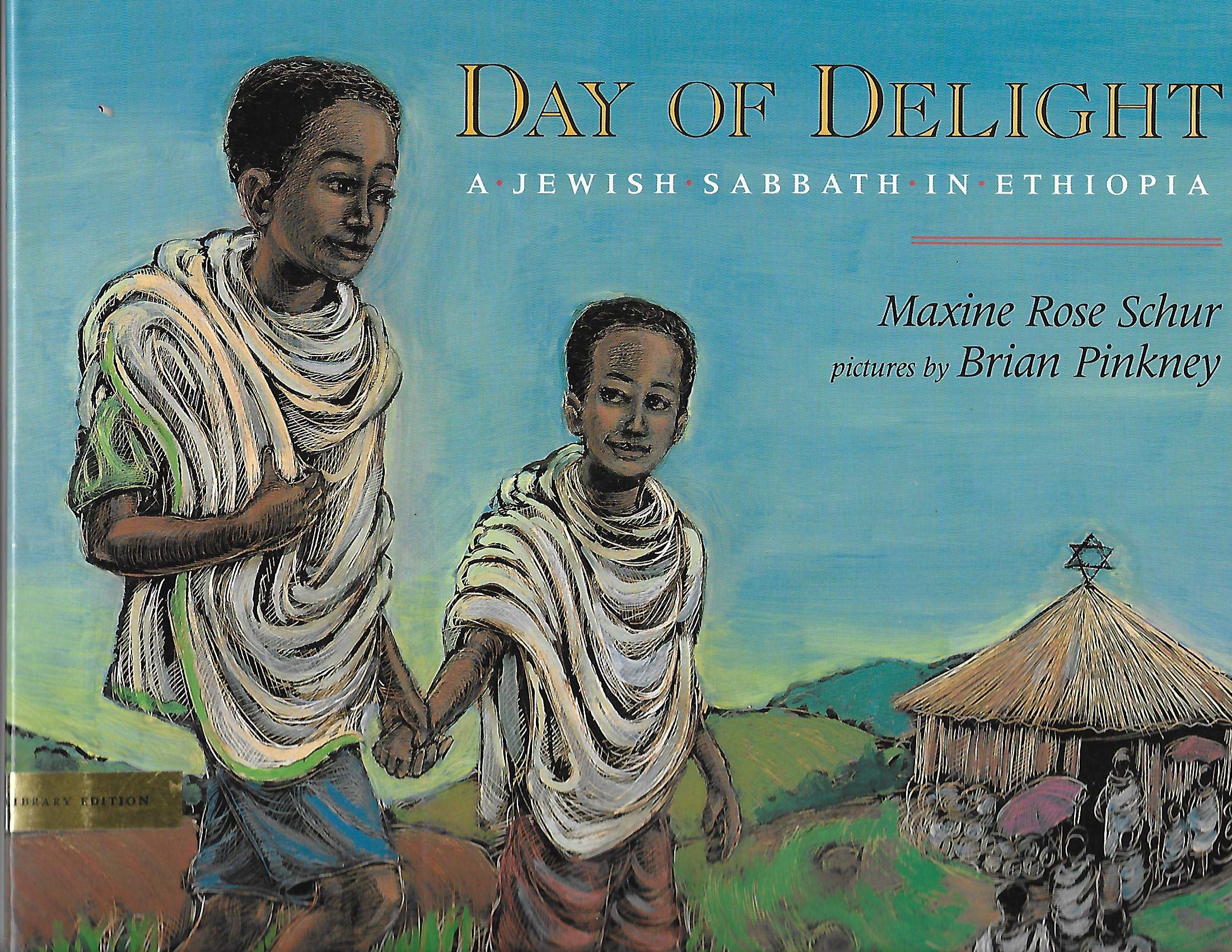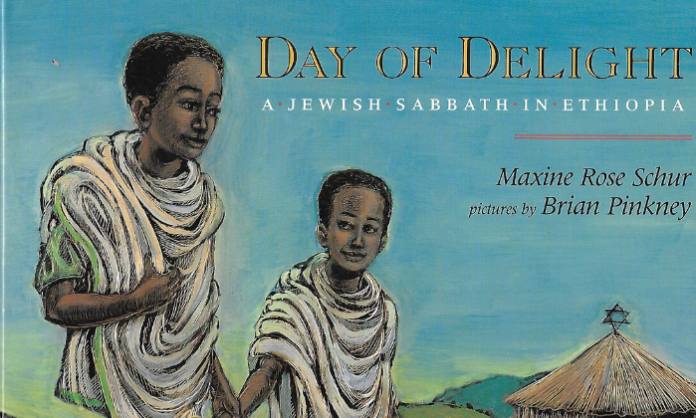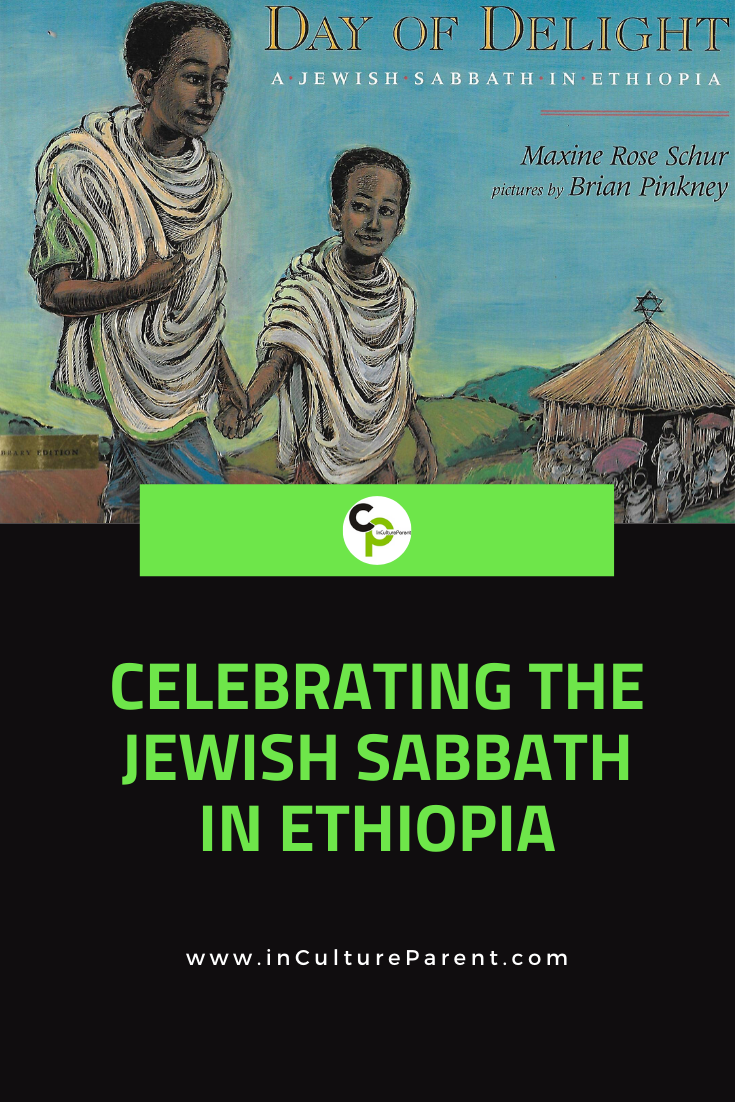
The book opens with a mother cooking breakfast of injera and coffee for her family inside their village hut. We follow the eldest son, Menelik, as he goes about his workday as a blacksmith with his father, crafting sickles used to cut down teff grass, which they will sell. Menelik watches his mother in the distance making clay jugs, cleaning and cooking with his little brother, Simcha, beside her. Friends collect honey from beehive baskets, Old Uri weaves a white shamma for market and village girls fetch water and drive the cattle. As the sun reaches its peak and the air becomes still, they stop their workday to prepare for the Sabbath.
“Sambat Salaam” they exchange at sundown. They eat in the moonlight. “No fire is lit. No drum is beaten. No gong is sounded.” As they eat, little brother Simcha breaks the solemnity and asks, “Do crocodiles have Sabbath too?” Everyone laughs and the mother explains that “we have one day for remembering God’s goodness through play, rest, and prayer.”
The next morning, the family goes to the mequrab, synagogue with their newly cleaned shammas, free from soot and holes. They pray in the ancient language of Ge’ez, “We are God’s chosen…today we do not struggle for food. Today we are at peace.” After the service, they share treats like sweet honey beer, jars of yogurt and baskets of dabo bread. They carry the Sabbath with them, warming their memories, into the next day.
Nearly all of the Ethiopian Jews, known as Beta Israel, today live in Israel, a community of over 120,000 people. The majority of the Beta Israel left Ethiopia in the 1980s on account of the civil war and famine, aided by the Israeli government in several rescue operations, most notably Operation Moses (1984), Operation Sheba (1985) and Operation Solomon (1991). The book therefore references “the story of a way of life that is quickly vanishing,” as the Author’s Note explains. A large part of the book’s strong appeal is the story of a unique community and their way of life, related in a way children can immediately access and digest, namely through their daily activities and foods. The scratchboard illustrations, largely in earth tones reflecting the beauty of the Ethiopian highlands, are a nice accent to the story.


































